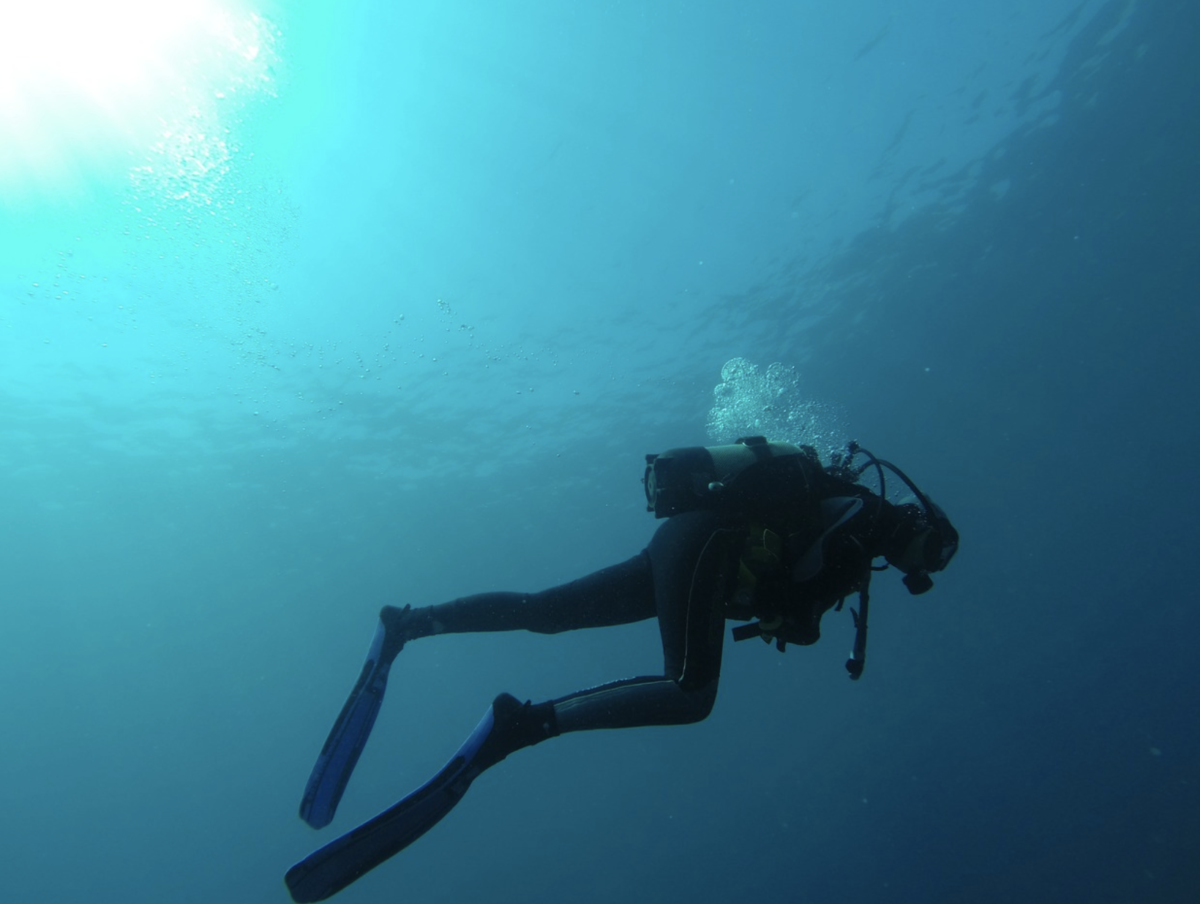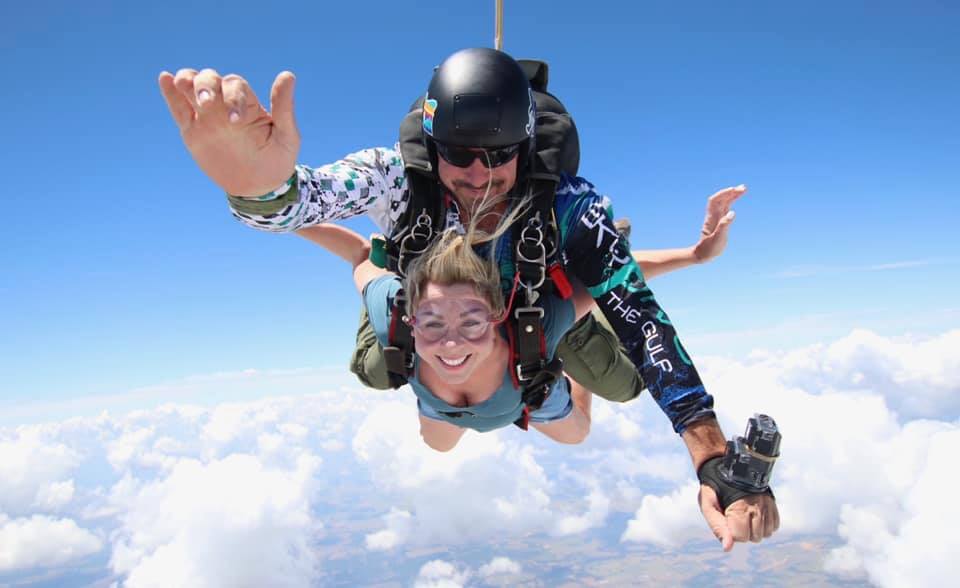Can You Scuba and Skydive on the Same Day?
Sunday, November 28, 2021
Can you scuba and skydive on the same day? The short answer is absolutely not. We’ll get into why, but first let’s explore the interesting and important connections between scuba diving and skydiving.
Extreme Sports
Flying like a bird and swimming like a fish both count as extreme activities.
Skydiving, of course, is when you jump from an aircraft, freefall for about a minute, and then deploy a parachute to descend the rest of the way back to the ground. Scuba diving (Self Contained Underwater Breathing Apparatus) is when you use a tank of pressurized air to breathe underwater without interruption.

Both activities involve entering an environment otherwise inaccessible to humans but – thanks to sophisticated technology and dedicated practice – can be achieved in exciting and relatively risk-free ways.
Equipment and Training
Both skydiving and scuba diving utilize personal equipment that enable us to navigate the spaces of our world that usually exclude us. But humans are a curious and industrious species! Not only have we figured out how to do these things, but we are also really quite good at them.

If we were to attempt to skydive or scuba with zero training, we would put ourselves and those around us in danger. With minimal, straightforward education and proper instruction, though, we can safely and successfully enjoy both activities. In fact, if you learn how to do both, you will recognize plenty of similarities in the methodology of learning each one.
Science!
Knowing what happens if you were to go skydiving and scuba diving on the same day is important, because the combination is dangerous.
It’s all about gas. The pressure of the air you breathe is decided by whatever is stacked on top of it. At ground level, the collection of gasses you inhale and exhale is pushed down by all the air above. Underwater, air is compressed more the deeper you go because of the weight of the water.
For example, at 10 meters underwater you are at two atmospheres of pressure. With each breath you take of pressurized air, you inhale and absorb more of the various gasses. Understanding how this works is part of initial scuba training, and it isn’t complicated once you’ve done the math a few times.
The Bends
The bends, or decompression sickness, most frequently occurs when ascending rapidly from deep below the water. The danger here is that an unhealthy amount of nitrogen from the diver’s tank comes out of solution and forms gas bubbles which travel through the bloodstream to the body’s tissues. As such, scuba divers have to be mindful about how deep they dive and for how long, and to avoid swimming up to the surface too fast.
The bends can be painful. Symptoms present between an hour and 48 hours post dive, and can range from achy joints and dizziness to loss of consciousness and embolism. If you get the bends you will likely get whisked away to a carefully controlled decompression chamber.
Hypoxia
The higher you go, the thinner the air. Descending quickly back to earth while skydiving does not pose a significant threat, but attention is certainly paid as to how long jumpers remain at exit altitude. Skydiving planes are unpressurized, and often go as high as possible before supplemental oxygen is required, i.e. 14,000 feet. Breathing thin air for an extended period of time can cause hypoxia – or insufficient oxygen to sustain bodily functions. But for the time it takes for a typical skydive, it is no problem at all.

Responsible Behavior
Safe and enjoyable scuba diving requires returning to a single atmosphere of pressure at sea level for a period. In other words, don’t go skydiving on the same day as going scuba diving!
For the official word on scuba diving and flight comes from the Federal Aviation Administration, which plainly states that you should:
- Wait at least 24 hours after any SCUBA dive before going to altitudes above 8,000 feet.
- Wait at least 12 hours after non-decompression stop diving and at least 24 hours after decompression stop diving before going to altitudes above 8,000 feet.
- Note that these altitudes are actual flight altitudes above mean sea level (AMSL) and not pressurized cabin altitudes.
24 Hours Is Worth The Wait
There’s a good chance that if you’re into the idea of jumping out of airplanes, then you are probably keen to have underwater experiences too. Finding yourself in a situation where both activities are available is quite common and – although high quality operators of both scuba and skydiving will have rules in place – it is ultimately your responsibility to make informed and safe decisions.
Ready to get the adventure started? Make a tandem or learn to skydive with us. Blue skies!
Copyright © 2024, Oklahoma Skydiving Center, All Rights Reserved.
DropZone Web Design & Marketing by Beyond Marketing, LLC





